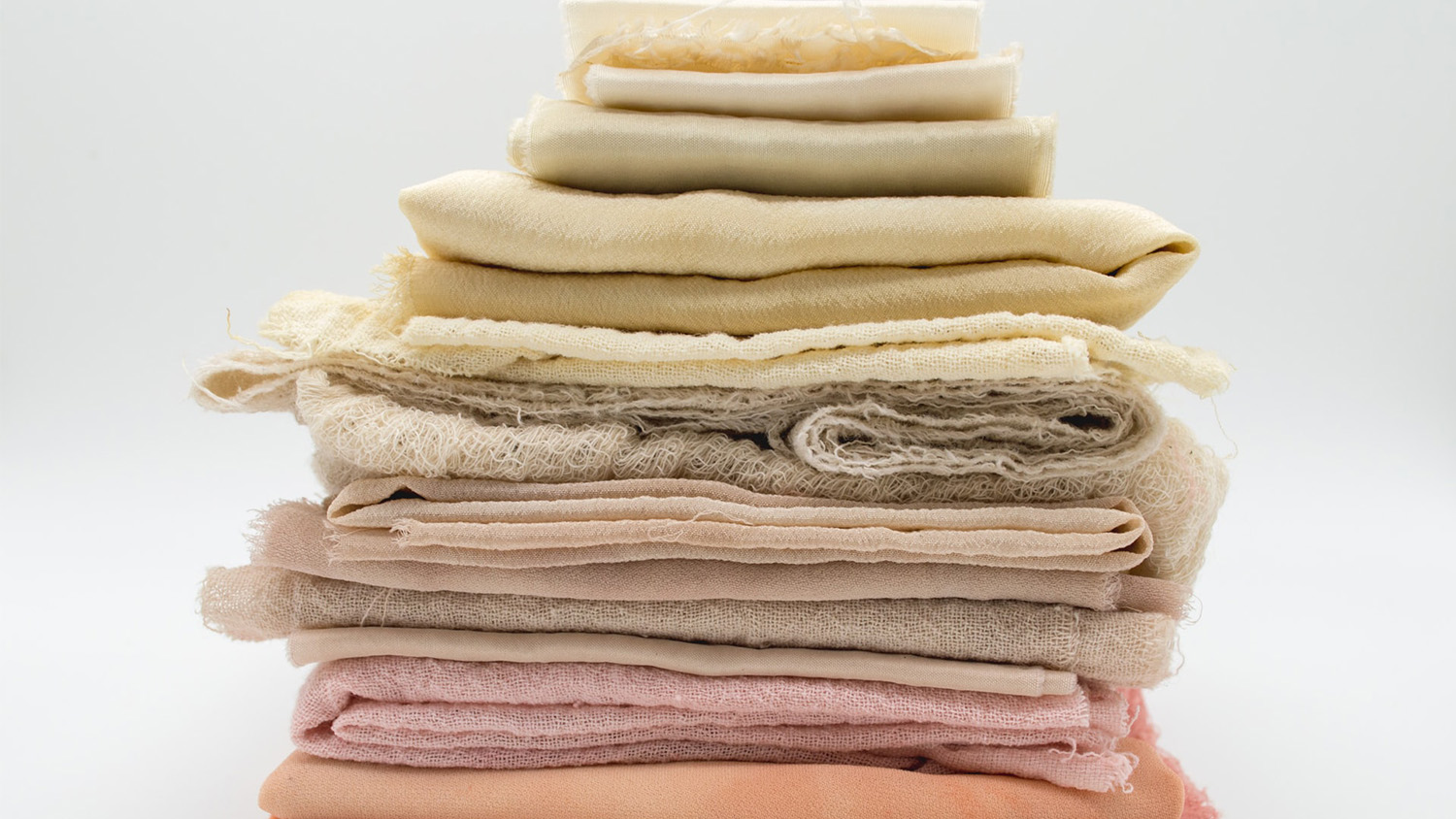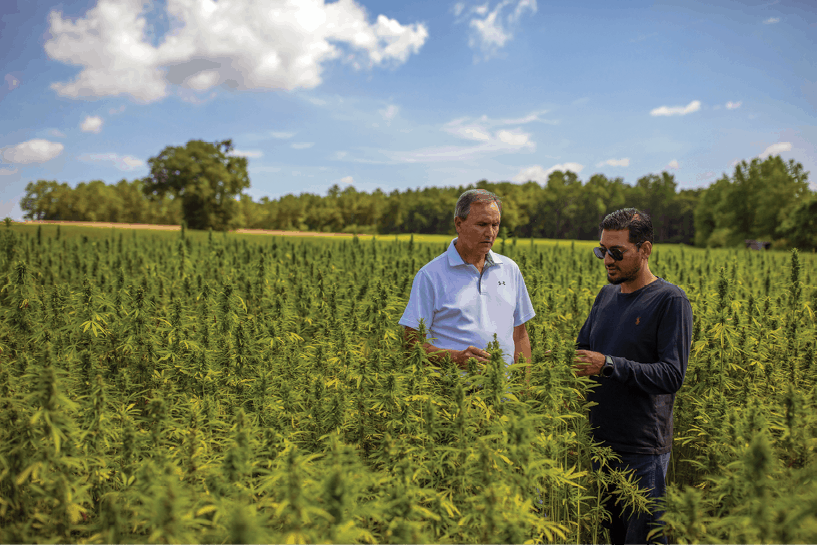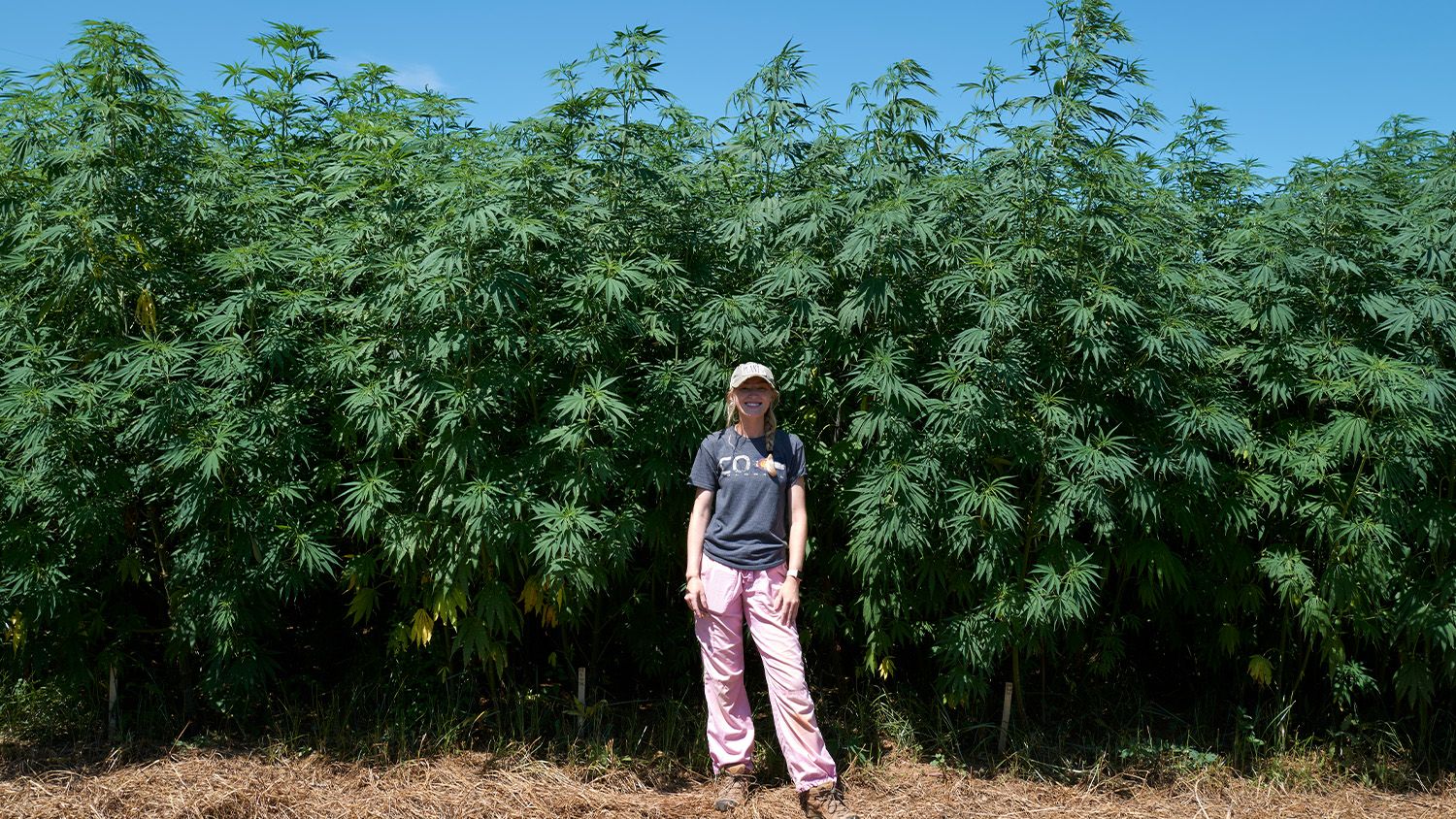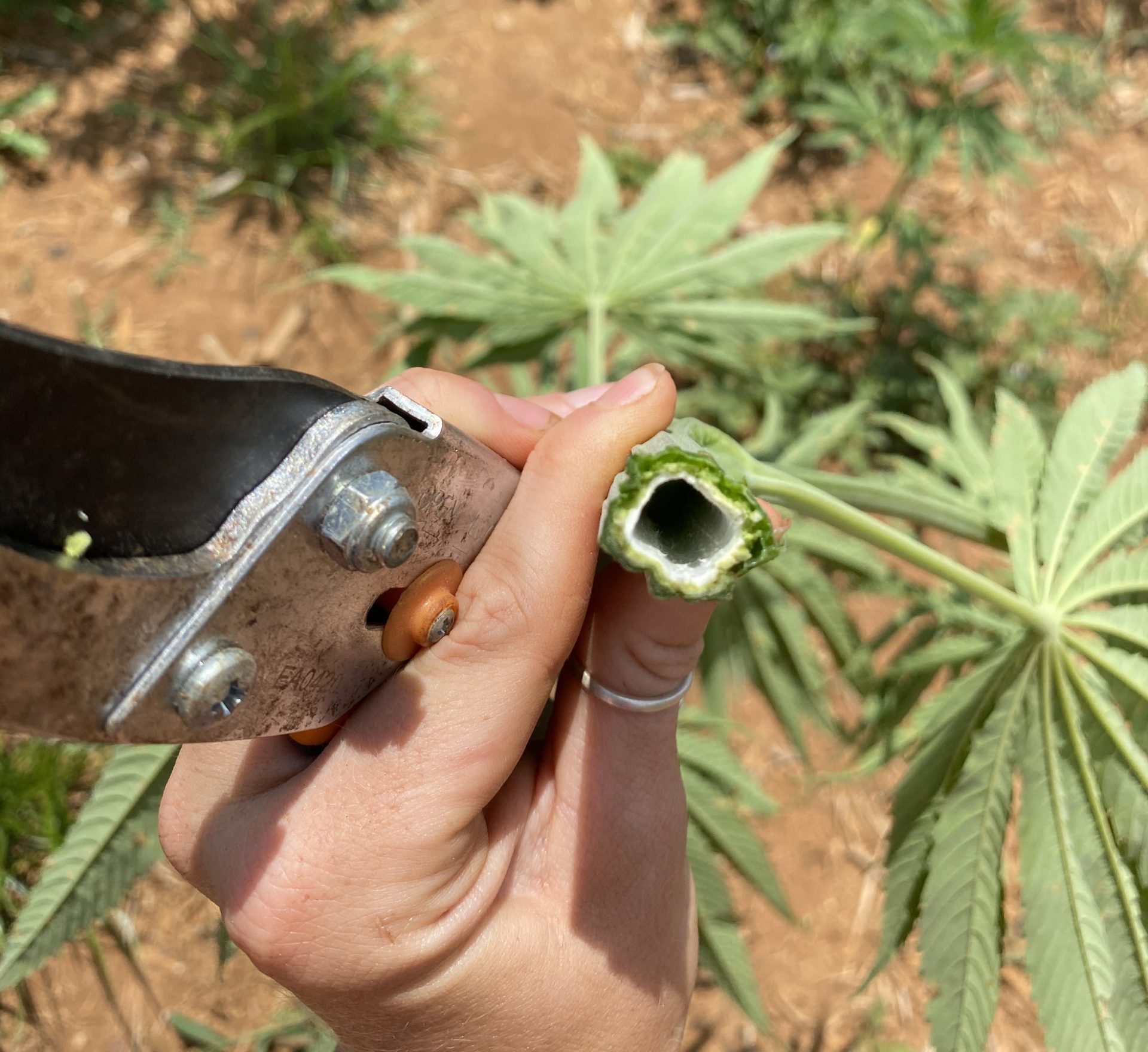Fiber Hemp: Haute or Hype?

In the 2010’s CBD frenzy, hemp became a four-letter word to some North Carolina farmers. Those who dove deep on CBD hemp struggled with losses when regulations mounted and contracts failed to materialize. But hemp is a plant of a thousand uses and fiber hemp, CBD hemp’s fashionable cousin, may offer NC farmers a reliable, sustainable alternative crop. Spurred by a new NC Department of Agriculture-funded grant, North Carolina State University researchers are fine-tuning fiber hemp production practices to revitalize NC’s textile runway.
North Carolina’s long history in textile production centers on cotton as the dominant fiber source, but fiber hemp is getting a foot in the door. With its versatile applications from fine apparel to building materials, fiber hemp’s lure as a sustainable, full-use plant is gaining a foothold.
Five fiber hemp processors have already emerged across the state, from Wilmington to Concord. But the supply of locally-grown fiber hemp is not equating to demand, mostly due to a lack of appropriate varieties.

Study Spotlights Adapted Varieties
NC State researchers began studying fiber hemp varieties in 2018 and experienced the same poor results as the state’s few fiber hemp farmers: low yields and correlated high expenses. But in 2021, a swap to Australian and Chinese fiber hemp varieties better suited to NC’s climate changed the crop’s outlook.
The Department of Crop and Soil Sciences’ assistant professor David Suchoff is the project lead.
“We have farmers who have been trying to grow fiber hemp for a number of years,” Suchoff said. “We now have genetics from China and Australia that are bred specifically for textile-grade fiber that can be spun/woven into garments or other textiles-related products.”
Suchoff’s current study plans to layer on to the initial variety gains in three ways: production best practices, weed management, and fiber quality.

Maximizing Biomass
The new varieties Suchoff trialed in 2021 showed a 400-600% yield improvement over the diminutive 2018 varieties. This year his group will conduct field trials of eight fiber hemp varieties at three research stations evaluating planting dates and biomass yield.
“Last year, we demonstrated that NC could easily match or exceed global production averages,” Suchoff said. “This project takes a collaborative approach working with local farmers, agronomists, and textile specialists to determine which varieties yield the best fiber product in NC.”
And it is a promising crop. Unlike CBD hemp, fiber hemp is planted at high densities, and management is fully mechanized resulting in fractional costs ($300/acre vs $14,00/acre for CBD hemp).
“So far we have not seen any significant insect pest or disease pressure in fiber hemp, which greatly reduces the need for pesticides,” Suchoff said. “And the massive amount of biomass produced may also mean that producing the crop can help sequester carbon. But our understanding of fiber hemp genetics, especially as it relates to fiber quality, is in its infancy compared with cotton.”

Taming Weed Pressure
One of the biggest challenges facing fiber hemp producers is weed management. There are currently no labeled herbicides for use in hemp. While that may change as the industry develops, Suchoff’s study is investigating cover crops to beat the weeds before they start.
“Cover crop mulching in no-till systems is successful in other row crops like soybeans and corn,” Suchoff said. “In addition to weed suppression, cover cropping provides additional agroecosystem services like increased soil organic matter, improved soil moisture, and buffering soil temperature changes. It could give farmers a sustainable tool to manage weeds in a crop where no conventional tools are available.”
Refining Fiber Understanding

But even with successful biomass production, netting the highest quality fiber is essential to spin off the highest farm revenue — up to $900/ac based on Suchoff’s initial work.
Three NC farms will host on-farm trials of the highest producing fiber hemp varieties. In addition to generating agronomic data, the crop’s fiber will be evaluated by NC State’s Wilson College of Textiles’ Physical Textiles Laboratory to analyze fiber density, tensile and elongation to determine the overall quality of fiber for textile use.
For Suchoff’s team to extract and evaluate their hemp fiber, they need the crop processed. The first step (retting) ages the crop in the field before removing hemp’s tough outer bark through a decorticator. Industrial processing plants handle these stages for commercial crops, but Suchoff needed processing equipment scaled to field trial use. He collaborated with NC State’s Department of Biological and Agricultural Engineering’s research shop to manufacture a mobile decorticator ideal for the project.
“What affects hemp fiber quality is the million-dollar question,” Suchoff said. “We want to better understand what agronomic practices can influence quality. This project will compare different genetics to determine if quality differs among them. Moving forward, we want to know how fertilizer, planting date, harvest date, retting, and crop maturity all affect fiber quality.”
Knitting Industry Connections
In a developing industry with multiple processing partners, it’s important to weave connections. Suchoff is co-organizing a two-day Evolving Textiles Conference March 16-17 to draw industry stakeholders, present research and create networks.
Day one of the virtual event centers on the crop itself, with presentations on breeding and production challenges, as well as commentary from farmers and others in fiber hemp agronomics. Day two is geared towards the textiles industry including presentations on spinning, product development, and more. In addition to keynote presentations, the schedule includes several Q&A sessions and networking opportunities. Registration for the conference is open now.
“Our main goal is to expand the industry network and bring as many individuals/companies associated with fiber hemp together,” Suchoff said. “With hemp being such a new crop, having a diverse network among researchers, farmers, breeders, and downstream industries is critical to move forward. And we want this event to be accessible to anyone interested in fiber hemp — from farmers to fashion companies!”

Fiber Farming Isn’t Either/Or
Suchoff hopes the inaugural textile conference, in addition to a planned August 2022 field day, will inform and inspire potential growers — including those already growing fiber. He doesn’t see hemp as directly competitive with the state’s traditional fiber crop. Much like the yarns they form, crop production can be a blend.
“I don’t like to pit fiber hemp against cotton. Both crops have their place in our agricultural systems. I think many folks who will end up growing fiber hemp will also be our cotton farmers,” Suchoff said. “On-farm diversity is a big incentive for growers. Not only does fiber hemp have the potential to break up pest and disease cycles, but it may add an economic buffer in case one crop fails or the market drops out. It’s the same principle behind diversifying your retirement account – it’s a means to spread out the risk.”
Still, farmers may be wary of adopting an evolving crop.
“We advise interested growers to start small. The market and economics of this crop are still not well developed. The last thing we want is for a farmer to lose significant amounts of money because they grew a crop they couldn’t sell,” Suchoff said. “I tell any farmer interested in growing fiber hemp to put in a few acres to experiment and learn. We developed this study’s objectives to result in immediately actionable recommendations just for that purpose.”

Looking For More Alternatives?
Crop and Soil Sciences’ research impacts farmers, students, and NC citizens through innovations in food, feed, fuel, and fiber. Follow how our discoveries affect agriculture and environmental science by joining our weekly newsfeed.
If you are a student interested in agronomy or crop production, investigate our undergraduate and graduate degree programs. Then join us for a guided email tour of our department and university.
Stewarding NC’s agriculture and environment through research is just part of how we are growing the future.
